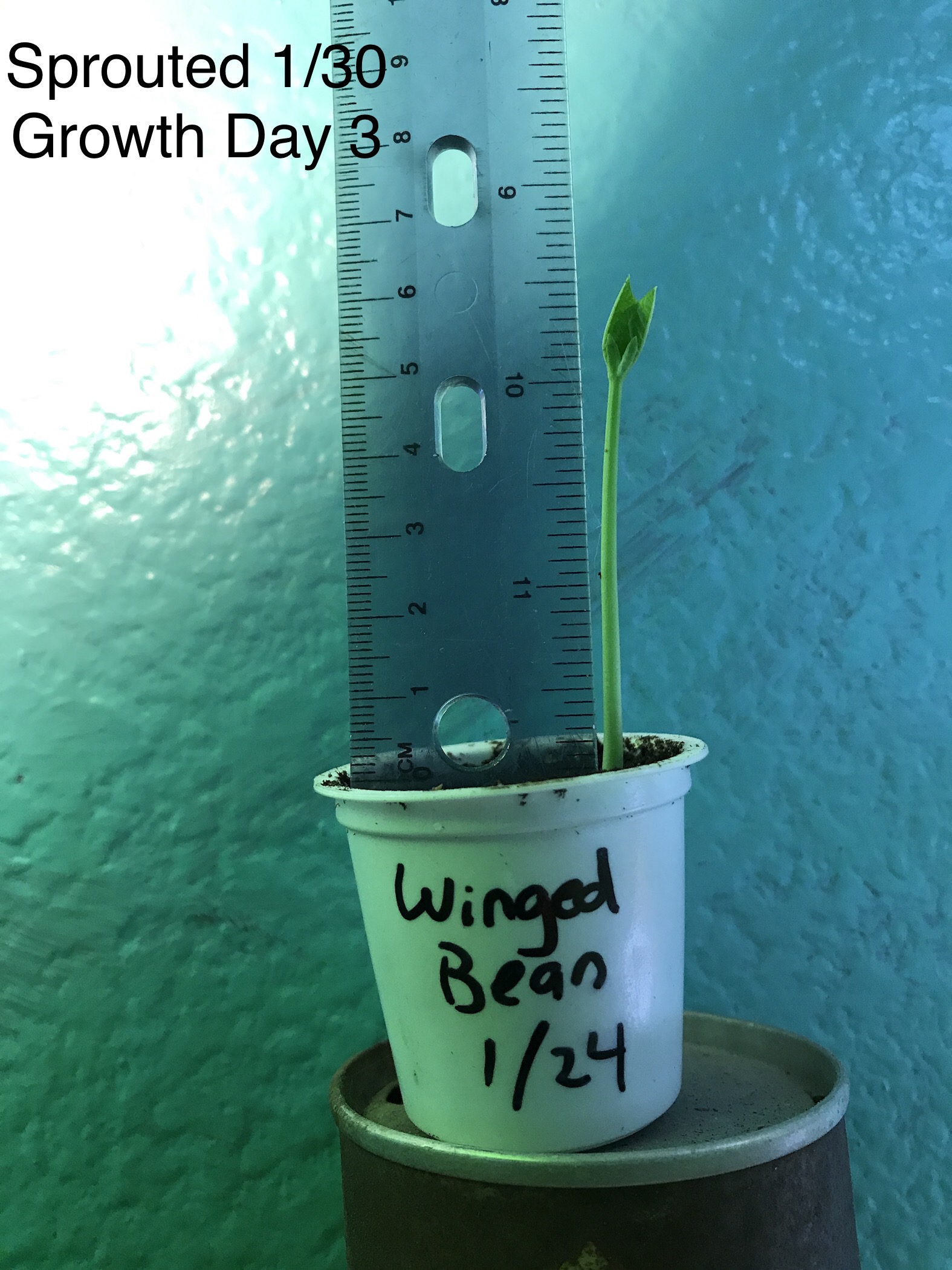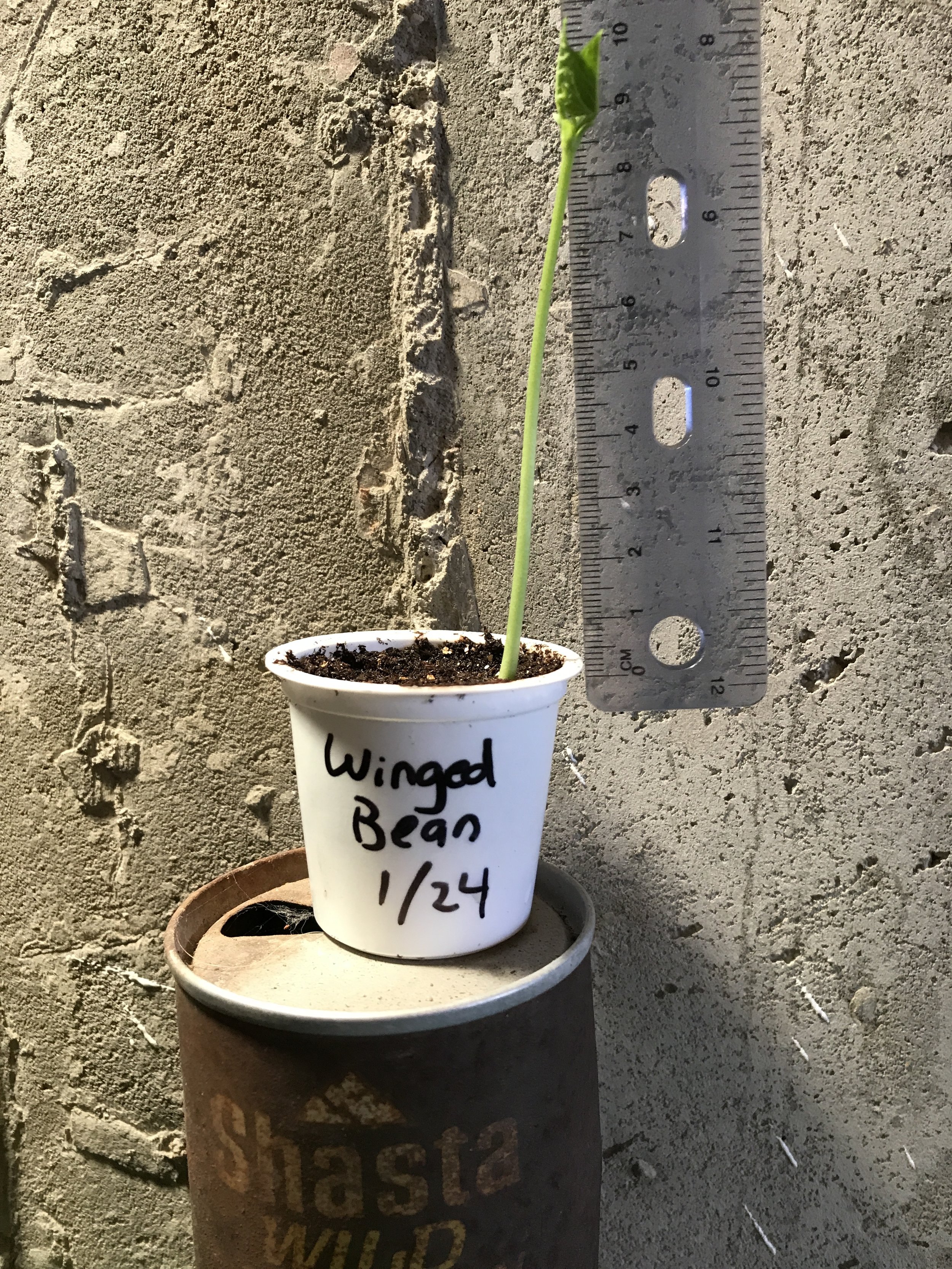Goa Bean: It'll Make Your Other Plants Feel Bad About Themselves
Psophocarpus tetragonolobus
Image Attribution: [8]
Many people like to call P. tetragonolobus a "one-stop grocery store," but I'd rather call it Sylvester Stallone from Rambo: Last Blood. Do you remember that scene when Rambo shirtlessly flexed-down on hundreds of people with machine guns who wanted to murder him? Did you think to yourself, "no human can engage an army with a bow and arrow and prevail!" Well, when Rambo surveyed his killing field of arrow-addled corpses, the guy was relatively unscathed. I think he acknowledged only one gaping bullet wound on his shoulder.
The guy just grunted at it… anyhow.
THAT was the Goa Bean standing on that hill: a monument to unachievable feats; a hulking caricature of what it means to be a real plant.
We are about to discuss a geometric freakazoid that provides seven edible uses: fresh pods, leaves, flowers, beans, roots, shoots, and oil. After this plant feeds an army of people, it will then feed all of the other plants in the vicinity because, you know, it hosts beneficial bacteria that can fix nitrogen like most legumes.
Now just look at your pathetic tomatoes. Why can't they be more like P. tetragonolobus? Shame on them; shame on all of them.
How to Grow (The Plan)
Psophocarpus tetragonolobus is a day length sensitive plant from the tropics so there may be some challenges to coaxing it to flower and fruit in a temperate zone (mine is 5b), however, with seven edible uses, this plant WILL provide leaves and, PERHAPS, tubers (SEE: A Strange Mystery below).
The plan is to scarify and soak the seeds in February. After the beans sprout, I will put the sprouts in small pots and put under artificial lights. I will then knock together two planter boxes with trellising. I will place the seedlings out in their box on May 20th or after the last threat of frost.
Although this approach is based on research, if you have experience growing P. tetragonolobus and see that I am about to do something stupid, please save me by leaving a comment below.
Update: I killed the plant, guys.
A Strange Mystery
Sources are conflicting. A fantastically thorough agricultural ledger I have heavily referenced [3], claims that the Goa Bean produces large edible tubers very early in its life cycle, and that by the time beans are being produced, the root turns fibrous and inedible [3][4]. Far more modern sources (mainly Youtube tutorials) claim that the edible roots take two years to develop and thusly cannot be harvested in temperate areas of the world.
The former claim for the plant forming succulent tubers early makes more sense from a physiological standpoint. After all, why would a plant produce flowers, fruit, and grow seeds before developing tubers (which are basically energy storehouses for the production of such things)? Perhaps I will grow one plant in a pot for tubers and see if it produces before the days get hot.
Image Attribution: [9]
Culinary Uses
The seeds of P. tetragonolobus yield an oil with culinary value [6].
The shoots can be eaten [7], and reportedly taste like spinach and asparagus.
The tuberous roots can be eaten raw or cooked [6].
The leaves can be eaten [7].
The beans can be eaten [7], and reportedly taste like sweet green beans.
The pods are edible [3][4][5][6][7].
The flowers are edible [7], and are said to taste like mushrooms when cooked.
History
The Goa Bean emerged from the mist of history as a vagabond of unknown origin. Some say it came from Madagascar and others said it came from Italy (Italy?!) [3]. The first recorded notation of the P. tetragonolobus was in southern China in 1790 [3]. It was later noted in Calcutta, India, in 1799 [3]. From the Calcutta Botanic Gardens, P. tetragonolobus was known to be transferred to the French island of Réunion by 1820 [3].
The Goa Bean was originally given the binomial, Dolichos tetragonolobus, by Carolus Linnæus and renamed Psophocarpus tetragonolobus by Noël Martin Joseph de Necker in 1790; this is still the accepted binomial [3].
Nutrition
The tuberous root is said to be 20% protein on a dry-weight basis and the bean of comparable protein content to soy with a reportedly superior flavor [5]. The protein content of P. tetragonalobus tubers is said to be 12 times as great as potatoes. The leaves are high in tryptophan and vitamin A [7].
Recipes
Pull Up Your Plants! (PUYP) is now receiving visits from all over the world. Please take the time to leave a comment or subscribe below. I’d like to hear about your experiences with the Goa Bean.
For source citations, please email Kevin Healey at
pullupyourplants. @ gmail.com
With Love,
Kevin.


![Image Attribution: [8]](https://images.squarespace-cdn.com/content/v1/59bae60f1f318d07a99856a4/1514838935440-21CWQUAF7I6GECAJVOM9/Winged+Bean.jpg)

![Image Attribution: [9]](https://images.squarespace-cdn.com/content/v1/59bae60f1f318d07a99856a4/1514839539472-YPGLQRNZMC27M0YMKEAQ/Winged+Bean2.jpg)



